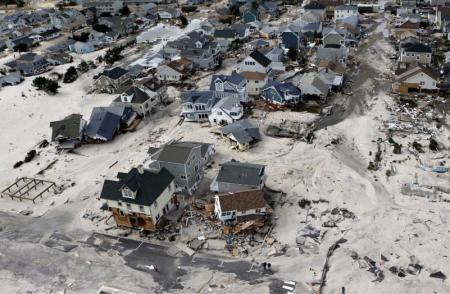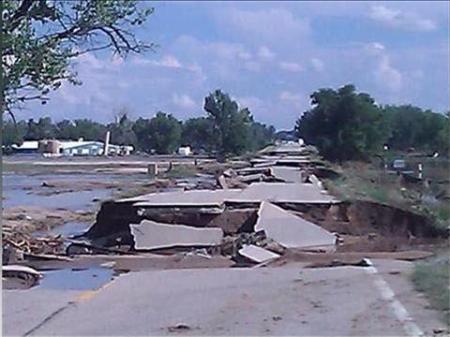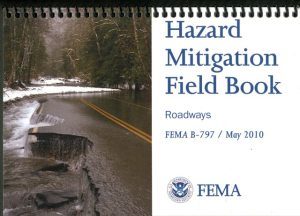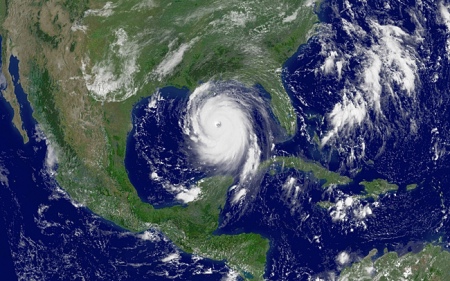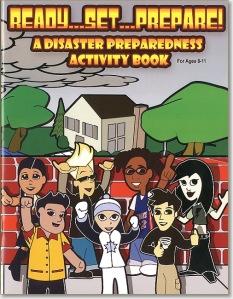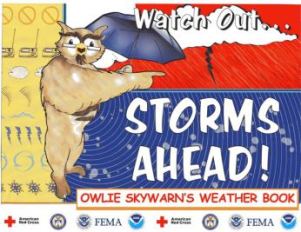Image below: Graph depicts how variations in the polar vortex affect weather in the mid-latitudes. Courtesy: National Science Foundation
 As the United States shivers under the Arctic Express, Polar Vortex, Polar Cyclone, Polar Low, Circumpolar Whirl or whatever name you call it (I just call it FREEZING!!!!) with snow, ice, and some of the most extreme cold conditions in decades, Americans will be happy to know that the Federal Emergency Management Agency (FEMA) has help available in the form of its extremely useful new disaster preparedness guide, Are You Ready?: An In-Depth Guide to Citizen Preparedness.
As the United States shivers under the Arctic Express, Polar Vortex, Polar Cyclone, Polar Low, Circumpolar Whirl or whatever name you call it (I just call it FREEZING!!!!) with snow, ice, and some of the most extreme cold conditions in decades, Americans will be happy to know that the Federal Emergency Management Agency (FEMA) has help available in the form of its extremely useful new disaster preparedness guide, Are You Ready?: An In-Depth Guide to Citizen Preparedness.
 Intended as both a reference source as well as a step-by-step manual, this easy-to-follow guide has been designed to help Americans “learn how to protect themselves and their families against all types of hazards”.
Intended as both a reference source as well as a step-by-step manual, this easy-to-follow guide has been designed to help Americans “learn how to protect themselves and their families against all types of hazards”.
According to the FEMA authors:
The focus of the content is on how to develop, practice, and maintain emergency plans that reflect what must be done before, during, and after a disaster to protect people and their property. Also included is information on how to assemble a disaster supplies kit that contains the food, water, and other supplies in sufficient quantity for individuals and their families to survive following a disaster in the event they must rely on their own resources.
The guide advises on planning before a disaster, responding during a disaster, and recovering after a disaster and is organized into the following sections: Why Prepare, Part 1 Basic Preparedness, Part 2 Natural Hazards, Part 3 Technological Hazards, Part 4 Terrorism, and Part 5 Recovering from Disaster.
Each chapter has specific tips on preparation, what to do during the particular disaster, instructions for what to do afterwards, and where to go for more information, including links for free publications.
Disasters and emergencies cover the gamut in three areas:
a) Natural Hazards, including: Floods, Tornadoes, Hurricanes, Thunderstorms and Lightning, Winter Storms and Extreme Cold, Extreme Heat, Earthquakes, Volcanoes, Landslides and Debris Flow (Mudslide), Tsunamis, Fires and Wildfires;
b) Technological Hazards, including: Hazardous Materials Incidents, Household Chemical Emergencies, and Nuclear Power Plants
c) Terrorism, including: General terrorist threats, Explosions, Biological Threats, Chemical Threats, Nuclear Blast, and Radiological Dispersion Device (RDD).
Are You Ready?… for Winter Storms and Extreme Cold
 As I was concerned about the extreme cold, I turned to Part 2, Natural Hazards, Section 2.5 Winter Storms and Extreme Cold.
As I was concerned about the extreme cold, I turned to Part 2, Natural Hazards, Section 2.5 Winter Storms and Extreme Cold.
In the preparation part, I found useful terminology such as the difference between sleet and freezing rain, protective measures and supplies to gather, tips on how to winterize my car (e.g., have you cleaned your car battery terminals and used gasoline additives to keep water out of your fuel lines?) and how to dress for the winter weather (did you know mittens are warmer than gloves?).
 During a winter storm, “Are you ready?” gives more advice, such as what to do if a blizzard traps you in the car and how to watch for signs of hypothermia.
During a winter storm, “Are you ready?” gives more advice, such as what to do if a blizzard traps you in the car and how to watch for signs of hypothermia.
[Signs of hypothermia]… include uncontrollable shivering, memory loss, disorientation, incoherence, slurred speech, drowsiness, and apparent exhaustion. If symptoms of hypothermia are detected, get the victim to a warm location, remove wet clothing, warm the center of the body first, and give warm, non-alcoholic beverages if the victim is conscious. Get medical help as soon as possible.
Other Useful Information in “Are You Ready?”
In addition to information on specific types of emergencies, the guide includes a number of other very useful resources.
Assembling a Disaster Supplies Kit: A whole chapter is devoted to assembling a good general disaster supplies kit for multiple locations: home, work and vehicle.
Practice Makes Perfect: Advice on how to practice and maintain your emergency plan is under Section 1.6.
General Evacuation Guidelines: Tells what to do to prepare your home if you have to evacuate, such as utility shut-off and safety, reviewing and securing of insurance and vital records, and so on.
Special Needs: Information on how to do disaster planning to accommodate someone with disabilities is included.
Pets: Caring for pets in emergencies is not forgotten, either.
FEMA Hazard Maps: It highlights how to get free hazard maps from FEMA in your area by accessing FEMA’s Hazard Mapping Portal.
 Warning Systems and Signals: The guide explains different national alert systems such as the Emergency Alert System (EAS) and National Oceanic & Atmospheric Administration (NOAA) Weather Radio (NWR), as well as the Homeland Security Advisory System with its Threat Conditions thermometer.
Warning Systems and Signals: The guide explains different national alert systems such as the Emergency Alert System (EAS) and National Oceanic & Atmospheric Administration (NOAA) Weather Radio (NWR), as well as the Homeland Security Advisory System with its Threat Conditions thermometer.
Quizzes: The guide even includes some quizzes such as the Terrorism Knowledge Check on page 172 that asks such questions as:
What would you do, if you were at work and…
a. there was an explosion in the building?
b. you received a package in the mail that you considered suspicious?
c. you received a telephone call that was a bomb threat?
Mental Health Issues: Tips are included on how to recognize if children vs. adults may need crisis counseling or stress management assistance as well as how to ease disaster-related stress (such as attending memorial services). For children, guidelines are included by age range of common reactions to traumatic events, along with tips on how adults can reassure children after a disaster.
For additional information about Federal mental and medical emergency resources, read our previous blog post: “Help is Just a Call, Click or Page Away: Federal Disaster Helplines & Emergency Medical Resources.”
Family Forms: The guide is customizable to you and your family with forms to fill out for your own emergency plans. Included is a form for you to use to fill out information as you collect it from your local authorities on possible hazards and emergencies in your community, the Risk Level and how to reduce your risk, along with a “Community and Other Plans” form to use to record answers from your local officials about your community’s disaster and emergency plans. Also included is a form to draw and to record your family’s specific evacuation route and another to record your Family Communications Plan.
Checklists and Appendices: The guide also includes some handy appendices: Appendix A: Water Conservation Tips, Appendix B: Disaster Supplies Checklist, and the all-important Appendix C: Family Communications Plan.
Preparedness Websites: One is a list of Disaster Public Education Websites from both the Federal Government such as FEMA’s own Ready.gov site (www.ready.gov), as well as non-Governmental sites, like the Institute for Business and Home Safety, www.ibhs.org.
Disaster Recovery Assistance: Finally, advice and resources for getting disaster recovery assistance are covered in the Are You Ready? guide, too.
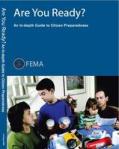 How can I get a copy of “Are You Ready?: An In-Depth Guide to Citizen Preparedness”?
How can I get a copy of “Are You Ready?: An In-Depth Guide to Citizen Preparedness”?
Whether you live near an active volcano; in Tornado Alley or a Hurricane Zone; in wildfire, mudslide or flood-prone areas; or just want to be prepared for any emergency—natural or man-made—this guide will help you save the day!
- MULTIPLE COPIES: FEMA recommends having a completed guide for each location for your family members: home, work or school, and your vehicle(s). Fill out the customizable sections in each copy with your relevant family, workplace and community information.
- Shop Online: You can buy this publication from the U.S. Government Online Bookstore at http://bookstore.gpo.gov by:
- Order by Phone: Call our Customer Contact Center Monday through Friday, 8 am to 5:30 pm Eastern (except US Federal holidays). From US and Canada, call toll-free 1.866.512.1800. DC or International customers call +1.202.512.1800.
- Shop our Retail Store: Buy a copy of any print editions from this collection at GPO’s retail bookstore at 710 North Capitol Street NW, Washington, DC 20401, open Monday–Friday, 9 a.m. to 4 p.m., except Federal holidays, Call (202) 512-0132 for information or to arrange in-store pick-up.
- Digital: Find a PDF version on the FEMA site.
- Visit a Federal Depository Library: Search for it in a nearby Federal depository library.
About the Author: Government Book Talk Editor Michele Bartram is Promotions Manager for GPO’s Publication and Information Sales Division in Washington, DC, and is responsible for online and offline marketing of the US Government Online Bookstore (http://bookstore.gpo.gov) and promoting Federal government content to the public.
 This year’s catastrophic impact of hurricanes Harvey, Irma, and Maria, has left many communities with the daunting task of having to rebuild. The Federal government offers help to homeowners directly affected by this season’s hurricanes. Drawing on lessons learned about coastal building damage after past hurricanes, FEMA produced Home Builder’s Guide to Coastal Construction, a 180 page manual including a series of 37 fact sheets to provide technical guidance and recommendations concerning the construction and renovation of coastal residential buildings.
This year’s catastrophic impact of hurricanes Harvey, Irma, and Maria, has left many communities with the daunting task of having to rebuild. The Federal government offers help to homeowners directly affected by this season’s hurricanes. Drawing on lessons learned about coastal building damage after past hurricanes, FEMA produced Home Builder’s Guide to Coastal Construction, a 180 page manual including a series of 37 fact sheets to provide technical guidance and recommendations concerning the construction and renovation of coastal residential buildings.


 Posted by Trudy Hawkins
Posted by Trudy Hawkins 









 Floods: The Awesome Power
Floods: The Awesome Power















